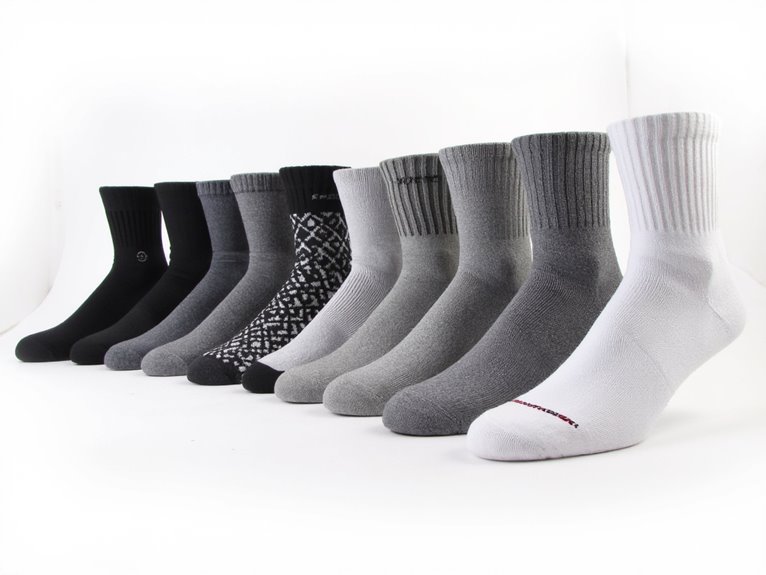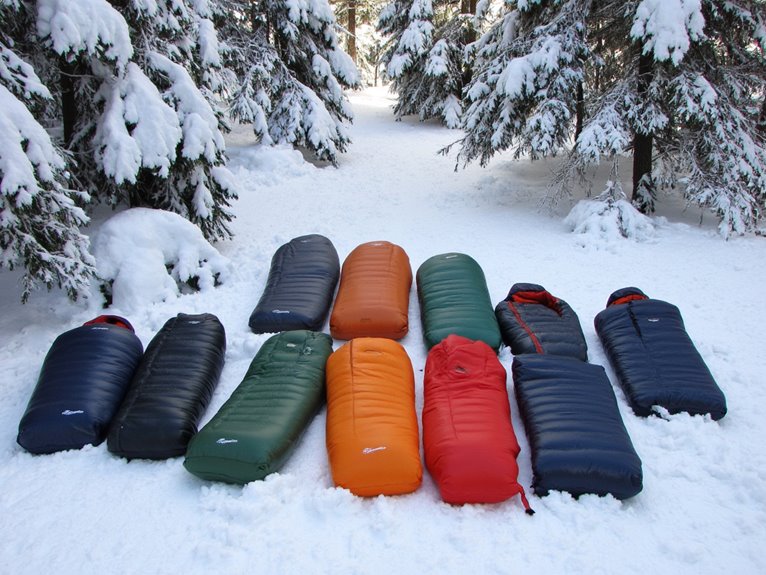What Are Backpack Frames Made Of?
Backpack frames are constructed from a variety of materials, each offering a unique balance of strength, weight, and durability to meet the diverse needs of backpackers and outdoor enthusiasts. Aluminum frames provide exceptional load-carrying capacity and are affordable, while titanium frames offer unparalleled strength-to-weight ratios. Carbon fiber frames boast impressive durability and resistance to corrosion, and plastic frames offer a lightweight design at an affordable price. Steel frames guarantee exceptional strength and corrosion resistance, and hybrid frames combine materials for superior performance. Understanding the advantages of each material is vital for choosing the ideal frame for your next adventure, and exploring these options further can help you plunge into an informed decision.
We are supported by our audience. When you purchase through links on our site, we may earn an affiliate commission, at no extra cost for you. Learn more. Last update on 29th December 2025 / Images from Amazon Product Advertising API.
Aluminum Frames: Strength and Affordability
Aluminum backpack frames offer a compelling combination of strength and affordability, making them a popular choice among outdoor enthusiasts.
They provide exceptional load-carrying capacity, ensuring that heavy backpacks remain stable and comfortable to wear.
Aluminum frames are also incredibly durable, withstanding harsh weather conditions and rough handling.
In addition, they are generally more affordable than frames made from other materials, making them an attractive option for hikers and backpackers on a budget.
While they may be slightly heavier than frames made from other materials, aluminum frames remain a reliable and practical choice for those seeking a reliable and affordable backpacking solution.
Titanium Frames: Ultra-Light and Strong
Titanium frames offer unparalleled benefits for backpackers seeking to minimize weight while maintaining strength.
One of the most significant advantages of titanium frames is their exceptional corrosion resistance, ensuring durability in harsh outdoor environments.
Additionally, titanium's remarkable strength-to-weight ratio enables significant weight reduction, allowing backpackers to cover more ground with less fatigue.
Corrosion Resistance Benefits
Rigorously tested in harsh environments, titanium frames have consistently demonstrated an exceptional ability to withstand corrosive elements, ensuring the integrity of the backpack's structure and load-carrying capacity.
This corrosion resistance is attributed to titanium's natural oxide layer, which forms a protective barrier against environmental factors.
As a result, titanium frames can withstand exposure to moisture, saltwater, and other corrosive substances without compromising their strength or integrity.
This benefit is particularly vital for backpackers and outdoor enthusiasts who venture into rugged and unpredictable environments.
Weight Reduction Advantages
While the corrosion-resistant properties of titanium frames provide a reliable structure for backpacks, their exceptional strength-to-weight ratio offers a significant advantage regarding weight reduction, allowing backpackers to travel lightly and efficiently.
Titanium frames are remarkably lightweight, yet incredibly strong, making them an ideal choice for backpackers who need to minimize their load without sacrificing structural integrity.
By opting for a titanium frame, backpackers can enjoy a significant reduction in weight, resulting in improved mobility, reduced fatigue, and improved overall performance.
This weight reduction advantage is particularly beneficial for long-distance hikers, ultralight enthusiasts, and adventure seekers who demand high-performance gear without the burden of excess weight.
Carbon Fiber Frames: High-Tech Hiking
In the pursuit of ultralight yet incredibly strong backpack frames, manufacturers have turned to carbon fiber, a material renowned for its exceptional strength-to-weight ratio.
Carbon fiber frames boast impressive durability, resisting cracks and breaks under heavy loads.
This high-tech material also excels in regards to corrosion resistance, ensuring a long lifespan for the frame.
Additionally, carbon fiber frames are remarkably lightweight, making them ideal for backpackers seeking to minimize their pack's overall weight.
While more expensive than other materials, carbon fiber frames offer unparalleled performance and reliability, making them a top choice for serious hikers and adventurers.
Plastic Frames: Budget-Friendly Options
When considering plastic frames, backpackers can reap the benefits of a lightweight design, which enables a more comfortable and efficient hiking experience.
Additionally, plastic frames offer affordable durability options, providing a reliable choice for those on a budget.
Lightweight Design Benefits
One of the most significant advantages of backpack frames with plastic designs is their remarkable lightweight property, which translates to increased comfort and reduced fatigue for hikers and backpackers.
This benefit is particularly important for long-distance treks, where every ounce of weight can make a significant difference.
By shedding excess weight, plastic frames enable backpackers to cover more ground with less strain, allowing them to conserve energy for more enjoyable aspects of their journey.
Additionally, the reduced weight of plastic frames makes them ideal for those who prioritize mobility and agility, such as trail runners or fast-packers.
Affordable Durability Options
Most backpackers can attest that a durable backpack frame is essential for a successful outdoor adventure, and plastic frames offer an affordable solution without compromising on durability.
These budget-friendly options are made from high-density polyethylene (HDPE) or polypropylene, which provide excellent strength-to-weight ratios.
Plastic frames are often injection-molded, allowing for precise control over the design and manufacturing process. This results in frames that are not only durable but also resistant to corrosion and extreme temperatures.
Additionally, plastic frames are often lighter than their metal counterparts, making them an attractive option for backpackers seeking to minimize weight without sacrificing performance.
In addition, a range of styles and designs are available, offering an affordable and reliable solution for outdoor enthusiasts.
Steel Frames: Durability and Reliability
Steel frames, renowned for their exceptional strength-to-weight ratio, offer unparalleled durability and reliability in backpacking, allowing hikers to traverse rugged terrain with confidence.
The high tensile strength of steel guarantees that the frame can withstand heavy loads and harsh weather conditions, making it an ideal choice for long-distance backpackers and adventure seekers.
Additionally, steel frames are resistant to corrosion, reducing the risk of damage from exposure to the elements.
With proper maintenance, a steel frame can last for many years, making it a worthwhile investment for serious backpackers.
Hybrid Frames: Blending Materials
By combining the benefits of different materials, hybrid frames offer a unique balance of strength, durability, and weight savings, making them an attractive option for backpackers seeking a versatile and high-performance solution.
By blending materials like aluminum, carbon fiber, and titanium, hybrid frames can achieve a superior strength-to-weight ratio.
This allows for a frame that is both lightweight and robust, capable of withstanding heavy loads while minimizing fatigue.
Additionally, hybrid frames often feature adjustable components, enabling a customizable fit that caters to individual backpackers' needs.
As a result, hybrid frames have become a popular choice among outdoor enthusiasts seeking a reliable and adaptable backpacking solution.
Frame Materials for Load Carrying
In the context of carrying heavy loads, the choice of frame material is paramount, as it directly impacts the backpack's ability to distribute weight evenly and provide comfortable support.
For load-carrying frames, manufacturers often opt for robust materials that can withstand heavy weights while maintaining durability.
Aluminum alloys, such as 6061-T6, are popular choices due to their high strength-to-weight ratio, corrosion resistance, and affordability.
Titanium frames are also used, offering exceptional strength, low density, and corrosion resistance, albeit at a higher cost.
Some frames may incorporate hybrid materials, combining the benefits of different materials to achieve superior performance.
Ultimately, the chosen frame material must balance strength, weight, and cost to provide reliable support for heavy loads, ensuring ideal functionality and efficiency.
Frame Weights: Impact on Hiking
When considering backpack frames, every ounce of weight can make a significant difference in hiking performance, and understanding the impact of frame weight on hiking is vital for maximizing overall efficiency.
A heavier frame can lead to increased fatigue, reduced mobility, and decreased endurance.
Conversely, a lightweight frame can boost hiking performance, allowing for longer distances and faster pace.
The ideal frame weight depends on factors such as hiking style, terrain, and load capacity.
Generally, a frame weight between 2-4 pounds is considered ideal for most hiking applications.
Frame Durability: Withstanding Elements
When evaluating the durability of a backpack frame, vital assessment is necessary to withstand various environmental elements.
This involves subjecting the frame to rigorous weather resistance tests, which assess its performance in extreme temperatures, humidity, and precipitation.
Moreover, a material strength analysis is vital in determining the frame's capacity to resist corrosion, abrasion, and other forms of degradation.
Weather Resistance Tests
Exposure to harsh weather conditions is a pivotal aspect of a backpack frame's durability, as it directly impacts the load-carrying capability and overall performance of the pack.
Weather resistance tests are essential in evaluating a frame's ability to withstand various environmental factors.
Manufacturers subject frames to simulated weather conditions, such as heavy rainfall, extreme temperatures, and intense sunlight, to assess their resilience.
These tests help identify vulnerabilities and enable manufacturers to make necessary improvements.
By simulating real-world scenarios, weather resistance tests provide valuable insights into a frame's performance and longevity.
This information is essential for outdoor enthusiasts and manufacturers alike, ensuring that backpack frames can withstand the rigors of outdoor adventures.
Material Strength Analysis
Beyond weather resistance, the durability of a backpack frame is largely dependent on the strength and resilience of its materials, which is evaluated through rigorous material strength analysis.
This involves testing the frame's ability to withstand various loads, stresses, and strains, simulating real-world scenarios.
The analysis assesses the material's yield strength, toughness, and fatigue resistance, ensuring it can handle heavy weights, sudden impacts, and repetitive use.
By subjecting the frame to controlled tests, manufacturers can identify potential weaknesses and optimize their design for maximum durability.
A vital material strength analysis is essential in ensuring a backpack frame can withstand the elements and support the weight of its contents, providing a reliable and comfortable carrying experience.
Choosing Frame Materials Wisely
Selecting the ideal frame material is essential, as it directly impacts the overall performance, durability, and comfort of the backpack.
When choosing a frame material, consider the intended use, terrain, and load capacity. For example, aluminum frames are suitable for heavy loads and rugged terrain, while carbon fiber frames are ideal for lightweight, fast-paced hiking.
Additionally, consider the frame's flexibility, corrosion resistance, and weight distribution. It's vital to balance the frame's strength with its weight to achieve peak performance.



